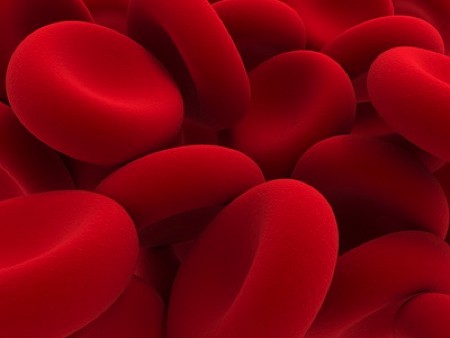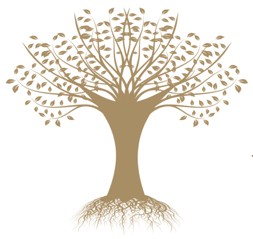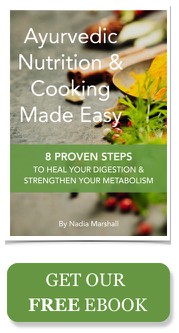By Kester Marshall
The word anaemia comes from ancient greek and means "lack of blood" and it is the most common disorder of the blood. It can refer to a decrease in the number of red blood cells or a reduction in the quantity of haemoglobin in the blood. It can also relate to deformities in haemoglobin molecules in the blood which affect their ability to carry oxygen.
From a Western medical point of view, anaemia can be diagnosed and categorised in a variety of ways. The first port of call is usually to assess the size of the blood cells (MCV or 'Mean Corpuscular Volume'). They can be microcytic (small), normocytic (normal sized) or macrocytic (big). Other tests can then be done if necessary to determine whether the cause is due to impaired production or excessive destruction of red blood cells.
Iron deficiency anaemia is the most common form of anaemia and can be seen when the blood cells themselves are small and at the same time, there is low serum ferritin (indicating low iron). This is caused by insufficient dietary intake or absorption of iron to meet the body's needs. Infants, toddlers and pregnant women are more susceptible to this form of anaemia because they have higher iron requirements in the first place (other factors such as heavy menstrual bleeding will also contribute).
Other forms of anaemia include:
> Megaloblastic anaemia (when the red blood cells are large) - caused by vitamin B12 and folate deficiency
> Haemolytic anaemia - caused by blood loss or excessive red blood cell destruction (in this case the cell size is normal)
Anaemia can also be caused by genetic or chronic diseases such as Thalassemia, Sickle cell anaemia, Leukaemia or other bone marrow disorders.
The Ayurvedic View
In Ayurvedic classical texts, anaemia is referred to as 'Pandu', meaning Pallor, one of it's common symptoms.
Its pathology begins, as always, with the dysfunction of Agni, the formation of Ama, and in this case the disturbance of Pitta dosha that is circulated around the body by aggravated Vata.
This is usually caused by eating foods that are too sour, salty, hot or pungent, incompatible food combinations (such as fruit with other foods; milk with other foods or milk and fish together), unsuitable foods, exercise or sex while one is digesting food, suppression of natural urges, anxiety, fear, anger and grief.
This circulating Pitta disturbs the Pitta in the heart (Sadhaka Pitta) and liver (Ranjaka Pitta) and causes slackness and heaviness in the tissues, especially affecting the blood, muscles and Ojas with its hot, penetrating qualities. This brings about poor/pale complexion (with other shades depending on the exact pathology), loss of strength due to loss of blood and fat tissue and other symptoms such as palpitations, giddiness, tinnitus, dry skin with cracks, fatigue, exhaustion, a feeling of 'looseness' in the whole body, pain, irritability, breathlessness, oedema under the eyes, aversion to cold and cramps after exertion.
Vata and Kapha dosha can also become involved and with this involvement other specific symptoms are detailed according to each dosha.
In Ayurveda, Pandu rog is classified according the predominance of the involved doshas (Vataj, Pittaj or Kaphaj), a combination of all three (Sannipataj) and one more that is caused by eating dirt or clay (this is most common in children).
The main secondary complications of chronic or severe anaemia are heart disease, tinnitus, jaundice, vomitting, severe thirst and oedema.
So, from an Ayurvedic point of view what can be done to heal the problem, apart from just taking a good iron supplement?
Firstly, Agni (the digestive fire) must be kindled in order to support proper digestion, absorption and metabolism. This is done by ensuring a proper diet that is light, yet nourishing to the tissues. This includes mildly spiced foods such as aged rice (this is lighter and easier to digest), barley, vegetable soup and in certain instances, meat broths. Mango, beetroot, cooked leafy greens with a little lemon juice, pumpkin seeds, pine nuts, lentils and pulses, and dried fruits such as raisins or apricots can also be helpful as long as the digestion is strengthened. Cooking in iron pots or pans can also help.
Having a diet that is balanced and gently nourishing for the tissues overall is important as digestion, absorption and assimilation of nutrients is a complex process. Iron needs vitamin C to be absorbed and competes with copper, calcium and magnesium for room in the 'absorption cue'. The herb Amalaki for example is seen as an excellent 'blood builder' in Ayurveda, but is not super rich in iron. Instead it is very high in vitamin C and has a wonderful cooling, pacifying effect on Pitta dosha in the body, thereby supporting the nourishment of the blood in a different way. Which brings us to the next point...
Any doshas involved in the pathology must also be pacified, but especially Pitta. Ghee is excellent for this purpose, it pacifies Pitta and Vata dosha, eliminates heat and dryness, facilitates digestion and nourishes the tissues. Good quality aloe juice taken daily can also be very useful for this purpose. Avoiding spicy, salty and fried foods, alcohol, tea and coffee, smoking, working in the heat, excessive exercise or staying up late are also essential.
If simple lifestyle measures and dietary changes do not seem to be working, please see a doctor and/or qualified Ayurvedic Practitioner as anaemia is more difficult to treat if it is chronic. While iron supplements alone may help, it is important to treat the underlying cause of your anaemia (malabsorption and pitta aggravation) and there are many traditional herbal formulations that are specific for addressing these problems.
If you are in any doubt about your health please be sure to consult an Ayurvedic Practitioner or your local health physician.



